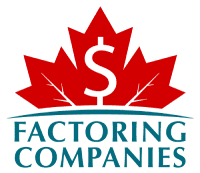Invoice Factoring for Import-Export Companies
Cash flow is the lifeblood of any company; however, it isn’t always easy to manage. Securing capital for a growing business is easier said than done, especially in the import and export sector, where international laws, tariffs, and procedures compound the challenges in accessing working capital.
Export invoice factoring – sometimes referred to as international factoring, foreign accounts factoring, or import-export factoring – can help eliminate the inherent cash flow bottlenecks in this industry.
Import Export Factoring vs. Bank Loans
International or cross-border trade demands fast cash flow. Unfortunately, the industry is renowned for longer payment wait times due to the lengthy export process and all the compliance requirements. Additionally, numerous banks and other traditional lenders strictly limit the levels of import and export financing they are willing to approve because they view it as too risky. This is the same reason many factoring companies also avoid the international trade industry.
However, the factors that do offer import and export factoring services are fully aware of the risks involved. An experienced import or export factoring company will be able to navigate the different time zones, language barriers, and international tariffs involved in collecting payments from your customers and know exactly how to operate so that their business is protected and yours.

International factoring involves selling your foreign accounts receivable to a third party (factoring company) at a discounted rate. You will receive a percentage of the invoice value upfront and can continue to grow your business operations. This type of service provides quick and flexible access to working capital by eliminating the long wait for importers to make payments. International factoring can be a great alternative to bank loans, bank financing, and other financing options with high debt costs.
Investing in export and import financing can help your business overcome its financial challenges and risks – allowing you to focus on what you do best: buying and selling abroad.
Top Financial Challenges in the Import-Export Industry
How to Run a Successful Import Export Company
Canada is one of the cheapest countries in the world to do business but exporting can be very expensive due to how quickly the costs add up and the large number of unforeseen or fluctuating costs. This is why export and import operations need reliable cash flow and comprehensive financial plans. To run a successful import-export company, you need to:
Exporting is a time-intensive process, and this can result in slow capital circulation, which results in higher costs and missed sales opportunities. Invoice factoring can help make your cash flow more predictable, and because you won’t have to worry about short-term cash flow as much, you will be in a better position to extend favorable payment terms to your customers and extend your competitive advantage.
Financing Options for Import Export Companies
We have established that cash is king, and without effective financing solutions in place, your import or export business will not be well-positioned to combat the numerous risks in the industry. So, what financing options are available?
When to Use International Invoice Factoring Over Letters of Credit
Both letters of credit and international invoice factoring are widely used in global trade to manage credit risk and secure payment across borders. But they serve different purposes and are suited to different transaction types.
A letter of credit offers a conditional guarantee from the buyer’s bank, making it ideal for high-risk or first-time international deals where trust has not yet been established. Despite this security, letters of credit are often slow, costly, and burdened with documentation requirements—making them less suitable for growing businesses that manage frequent shipments or need to close deals quickly.
Invoice factoring, by contrast, converts outstanding accounts receivable into immediate cash based on the invoice amount—without relying on the buyer’s bank. It works well for exporters offering longer credit terms who want to improve cash flow without increasing debt or waiting 60 to 90 days for payment. This type of accounts receivable financing is especially useful when dealing with trusted customers but facing liquidity constraints.
For importers and exporters seeking speed, flexibility, and support for ongoing transactions, international factoring is often the more practical solution. When working with an experienced factoring company, businesses also gain support for navigating local market risks, currency fluctuations, and the complexities of cross-border operations.
Strategic Advantages of Invoice Factoring for Global Trade
Managing cash flow in international trade is a constant challenge due to extended payment terms, shipping delays, and cross-border compliance requirements. Invoice factoring offers a powerful financial solution by converting accounts receivable into immediate working capital—without increasing liabilities on the balance sheet.
Unlike traditional bank loans, factoring allows global traders to receive cash quickly, without lengthy approval processes. This is especially valuable for growing companies entering new markets, where trade norms vary and payment behaviors can be inconsistent. A trusted international factoring partner can also mitigate exchange rate risks, handle multi-currency receivables, and offer protection against bad debts through structured agreements.
The flexibility of recourse and non-recourse factoring also enables businesses to select how much credit exposure they retain. Meanwhile, partnerships with export and import factoring companies and services like reverse factoring create a more robust factoring system tailored to international operations.
Ultimately, factoring helps facilitate smoother trade cycles, optimize cash flow timing, and unlock new growth opportunities in a way that traditional bank financing cannot match—making it an essential tool in any international trade strategy.
Invoice Factoring as a Solution for Import-Export Companies
Import-export companies encounter unique challenges in managing cash flow and working capital. Invoice factoring emerges as a key solution, enabling these businesses to instantly convert accounts receivable from international transactions into accessible funds. Unlike traditional financing options that rely heavily on credit history, invoice factoring prioritizes the creditworthiness of your clients, offering a straightforward path to liquidity without adding debt. This method is particularly advantageous for import-export businesses that often deal with extended payment terms, providing them with the necessary capital to keep operations smooth and to finance the next deal.
Whether engaging in non-recourse factoring, which mitigates the risk of customer default, or recourse factoring, where the company retains this risk, invoice factoring adapts to the needs of global traders. It simplifies the invoice factoring process, ensuring that outstanding invoices become a source of immediate working capital. By adopting invoice factoring services, import-export firms not only safeguard their cash flow but also position themselves strategically for scaling operations and tapping into new markets. In essence, invoice factoring stands out as an effective financial strategy for those looking to excel in the competitive import-export industry, transforming accounts receivable into a tool for growth and financial stability.
Your industry has its unique cash flow challenges, and you want to partner with someone who understands your financial needs and business model. If you’re in the import or export business and are looking to boost your cash flow, speak to an industry-specific factoring company about your financing options.
Browse our Factoring Guide to discover what you should look for when selecting the best factoring company to partner with or request a quote for invoice factoring for import-export companies today.
Get an instant factoring estimate
Factoring results estimation is based on the total dollar value of your invoices.
The actual rates may differ.
CLAIM YOUR FREE FACTORING QUOTE TODAY!
PREFER TO TALK?
You can reach us at
1-866-477-1778
What People Say About Our Factoring Partners
“Very helpful and welcoming from the beginning to present. Outstanding TEAM!!!!”
“Good customer service, a good partner for your business to grow!”
“I’m very happy with the service I’ve received from beginning to end.”
“Everyone I talk with is very knowledgeable and patient in helping get the information needed to improve my Business! Thank you!”
“The whole staff is very friendly knowledgeable, helpful, and go to extra mile to make sure you accomplish all your goals.”
“I am more knowledgeable about my business and have more help now than I could have ever imagined. Great experience !!”
Get an instant factoring estimate
Factoring results estimation is based on the total dollar value of your invoices.
The actual rates may differ.
CLAIM YOUR FREE FACTORING QUOTE TODAY!
PREFER TO TALK? You can reach us at 1-866-477-1778
As Seen In






Our Partners Belong To






